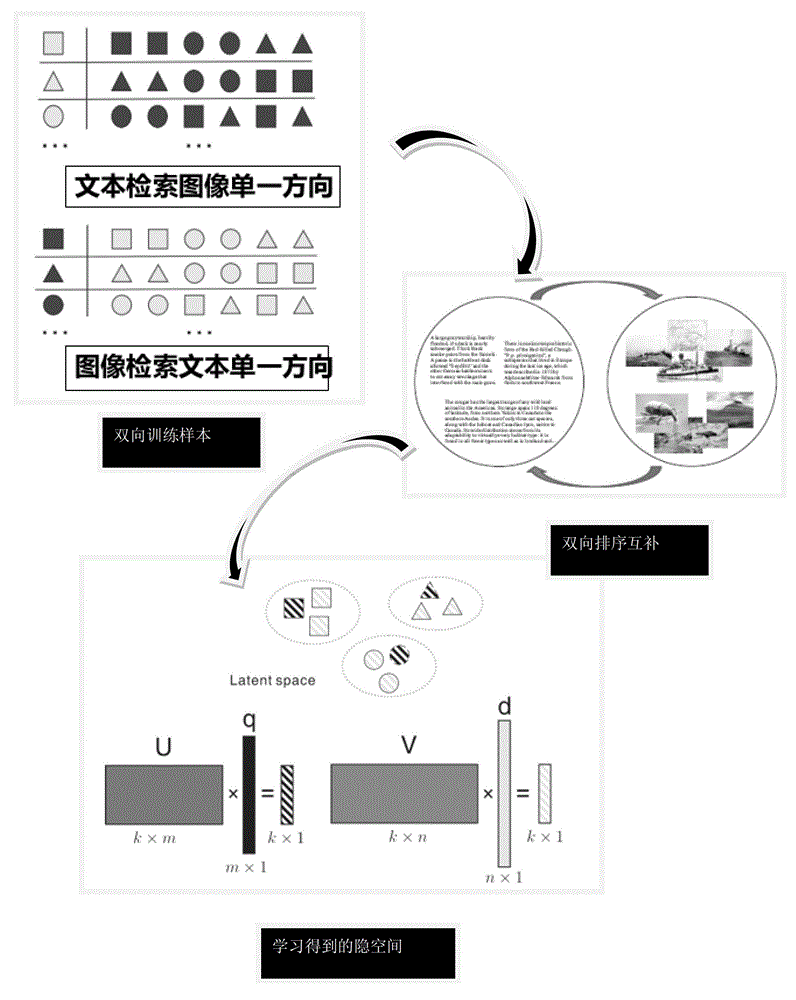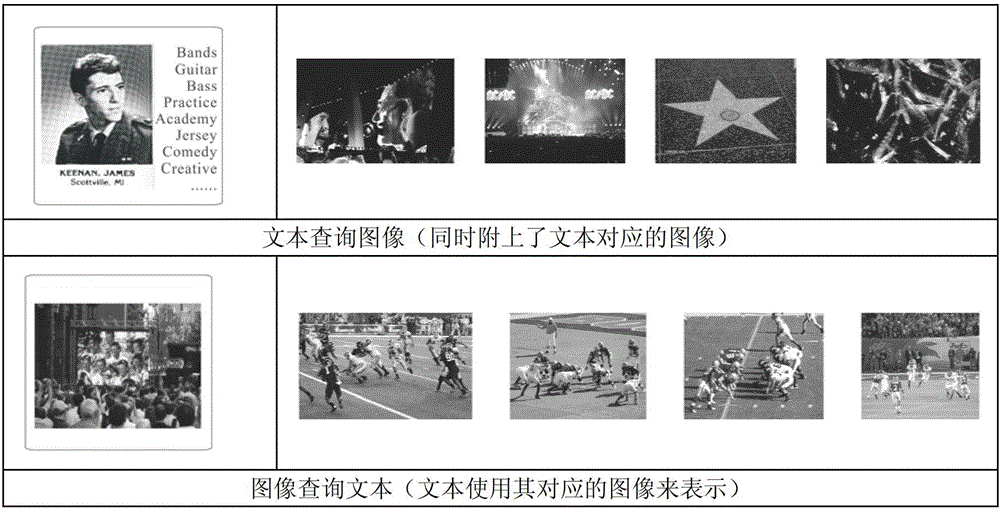Cross-media sorting method based on hidden space learning and two-way sorting learning
A technology of two-way ranking learning and latent space learning, which is applied in multimedia data retrieval, special data processing applications, instruments, etc., can solve the problems that keywords cannot objectively reflect image semantics, the amount of engineering is huge, and the retrieval performance of semantic gaps.
- Summary
- Abstract
- Description
- Claims
- Application Information
AI Technical Summary
Problems solved by technology
Method used
Image
Examples
Embodiment
[0059] In order to verify the effect of the present invention, about 2900 webpages were grabbed from the webpage of "Wikipedia-Daily One Picture", which were divided into 10 categories, and each webpage contained an image and several relevant description texts. Experiment with this data set. If both the image and the text belong to one of the 10 categories, the image and the text are considered to be related, otherwise they are not. The data set is divided into a training set and a test set, and the present invention performs training on the training set, and then independently evaluates on the test set. Carry out according to said step of the present invention for feature extraction, wherein after removing common words and uncommon words, text space is set to 5000 dimensions, and image space is set to 1000 dimensions. In order to objectively evaluate the performance of the algorithm of the present invention, the inventors use Mean Average Precision (MAP) to evaluate the pres...
PUM
 Login to View More
Login to View More Abstract
Description
Claims
Application Information
 Login to View More
Login to View More - R&D
- Intellectual Property
- Life Sciences
- Materials
- Tech Scout
- Unparalleled Data Quality
- Higher Quality Content
- 60% Fewer Hallucinations
Browse by: Latest US Patents, China's latest patents, Technical Efficacy Thesaurus, Application Domain, Technology Topic, Popular Technical Reports.
© 2025 PatSnap. All rights reserved.Legal|Privacy policy|Modern Slavery Act Transparency Statement|Sitemap|About US| Contact US: help@patsnap.com



